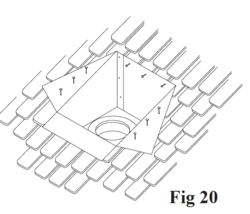Stay with me here, I know that sounds like an absolutely astonishing question, but there's a valid inquiry behind it.
In spring, we're having our roof replaced with a standing seam metal roof. Poking a penetration through such a roof after it's installed is a big no-no. So that's really our only chance to put a chimney in if we ever want a wood stove. However, we just did the budget for the year and there's no way to afford a wood stove this year. Is it possible to install the cathedral ceiling support box and whatever has to go on the outside of the roof in order to allow the roofer to flash/water seal the penetration, yet not install anything else?
I'm hoping that you guys will say the cathedral ceiling support box plus the exterior pipe can be installed, capped off to air-seal it with some insulation stuffed in the pipe for the next year, and then we can just add the interior pipe from the inside at a later date.
Does it work that way or are we out of luck?
In spring, we're having our roof replaced with a standing seam metal roof. Poking a penetration through such a roof after it's installed is a big no-no. So that's really our only chance to put a chimney in if we ever want a wood stove. However, we just did the budget for the year and there's no way to afford a wood stove this year. Is it possible to install the cathedral ceiling support box and whatever has to go on the outside of the roof in order to allow the roofer to flash/water seal the penetration, yet not install anything else?
I'm hoping that you guys will say the cathedral ceiling support box plus the exterior pipe can be installed, capped off to air-seal it with some insulation stuffed in the pipe for the next year, and then we can just add the interior pipe from the inside at a later date.
Does it work that way or are we out of luck?


